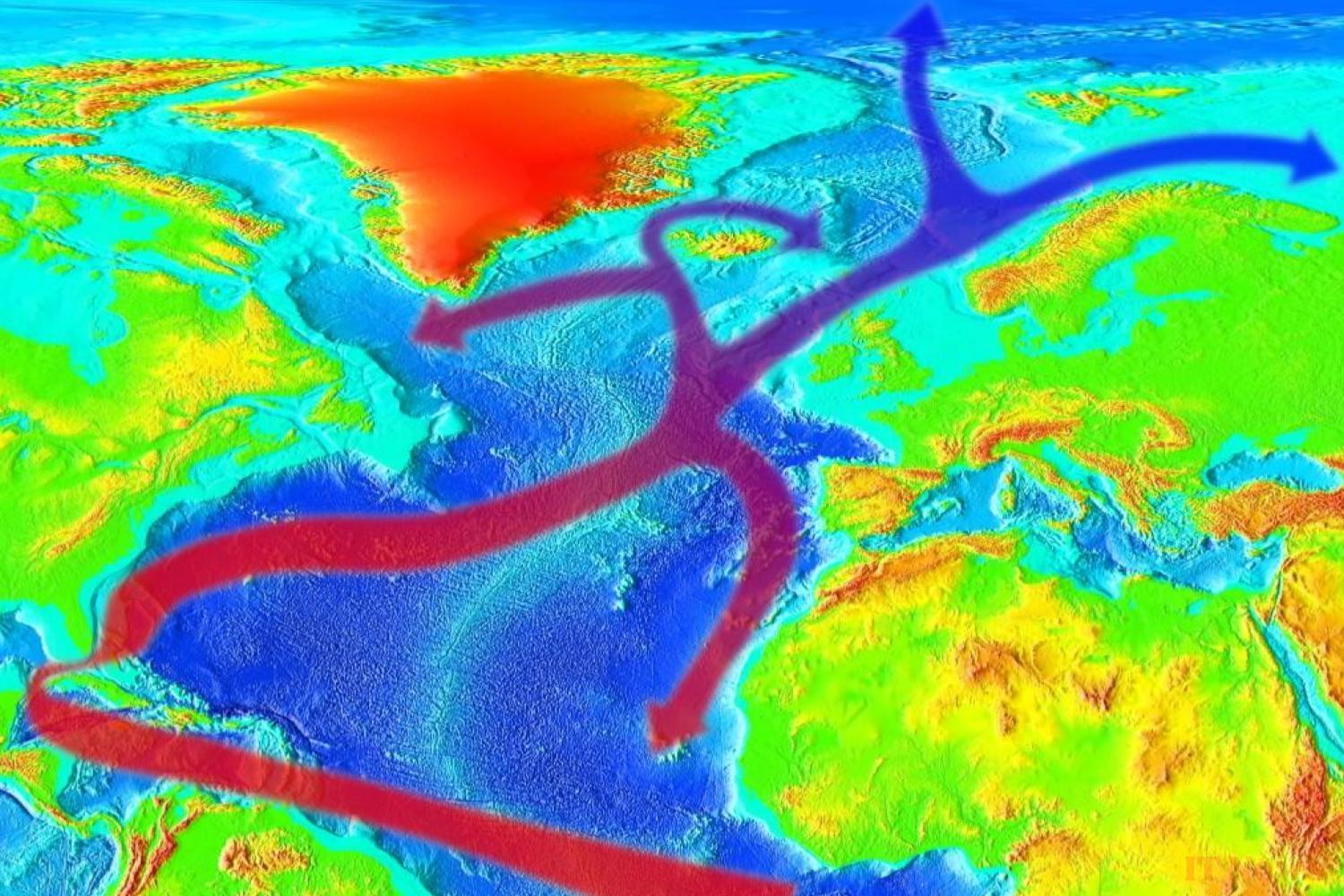Researchers at Florida Atlantic University have identified a set of ideal zones that could generate very large quantities of green energy using ocean currents. This study outlines the contours of a still nascent, but very promising technological niche in the field of renewable energies.
The oceans, which cover more than 70% of the Earth's total surface, represent an absolutely gigantic energy well. From megawatt-sized offshore wind turbines to tidal power plants, humanity has already made great strides when it comes to harnessing it to produce renewable energy.
This gigantic twin turbine can withstand a Category 5 hurricane
But there is another phenomenon, perhaps even more promising in this context, that we have barely touched on: ocean currents like the Gulf Stream, these very large-scale movements of water that constantly cross the planet. We hardly exploit them at present—and that’s a shame, because they are a very promising energy source in many respects.
Stable and powerful renewable energy flows
The first interesting point is its stability. Most renewable energy sources typically suffer from an intermittency problem: wind power remains dependent on the wind speed at a given moment, while half the planet is constantly deprived of solar energy. But ocean currents, on the other hand, are extremely regular in comparison, and never stop despite some seasonal variations. A far from negligible advantage.
But the most important point is the volume of energy that could theoretically be extracted from them. These immense masses of moving water hide a very significant amount of kinetic energy, especially when we think in terms of yield per unit area. And this is precisely what the American researchers attempted to demonstrate.
In their study, they combed through nearly three decades of data captured by satellite-tracked buoys to statistically identify the most promising locations. And the first observation is that such areas are far from rare.
In total, the authors identified approximately 490,000 km² of ocean where currents could generate 500 to 1,000 watts per square meter. For reference, this roughly corresponds to what the wind industry considers a high-yield area, perfect for hosting a large offshore wind farm. In some regions, such as the east coasts of Florida and Africa, this theoretical efficiency even exceeds 2,000 W/m²—a figure that would make it the most efficient renewable energy source in terms of production per unit area!
The authors note, however, that not all of these areas will necessarily be ideal in practice, as some currents will undoubtedly be too deep or too chaotic to be exploited satisfactorily. But these data still confirm that ocean currents represent a substantial energy source that it would be a shame to miss out on in the current context.
Huge constraints
The study represents a good starting point at this level. Now that we know where the areas with high energy potential are located, it will be possible to study them on a case-by-case basis to begin building the equipment needed for collection... but that doesn't mean that we're going to unlock a revolutionary new renewable energy source overnight.
Indeed, this study does not at all address the technical constraints, which remain both numerous and substantial: harnessing the energy of ocean currents will be anything but child's play.
The main problem is that a turbine's output is proportional to its velocity cubed. However, the velocity of ocean currents is much slower than that of winds. The water set in motion by the Gulf Stream, for example, moves at about 2 m/s on average, compared to just under ten meters per second for the winds typically harnessed by wind turbines. Capturing energy from ocean currents profitably would require installing some pretty gigantic turbines.
And that's a big problem, because such mega-underwater turbines represent a significant engineering challenge—both in terms of design and installation, not to mention maintenance. Between the salt water that generates substantial corrosion and the algae and mollusks that could hamper the operation of these machines, the maintenance requirements would be far greater than those of a wind turbine. Specialized submersibles would also need to be built to carry out these operations.
Real potential despite the difficulty
And this is only the tip of the iceberg. There are also several logistical, geopolitical, and ecological problems. One example is the location of these currents: they generally pass several dozen kilometers from the coast and several hundred meters below the surface, which further increases the complexity of the equation.
Furthermore, the ownership of certain ocean areas by a particular nation is a sensitive issue, as is often seen in the field of industrial fishing. Finally, the impact of such an installation on the ecosystems concerned will also need to be rigorously studied to avoid a serious environmental disaster.
It is largely because of these constraints that tidal energy is currently favored by industry—but this may not be inevitable. This technology is worth keeping an eye on, because if researchers and engineers can one day overcome these obstacles, ocean currents could well establish themselves as a first-class renewable energy source.
The text of the study is available here.



0 Comments